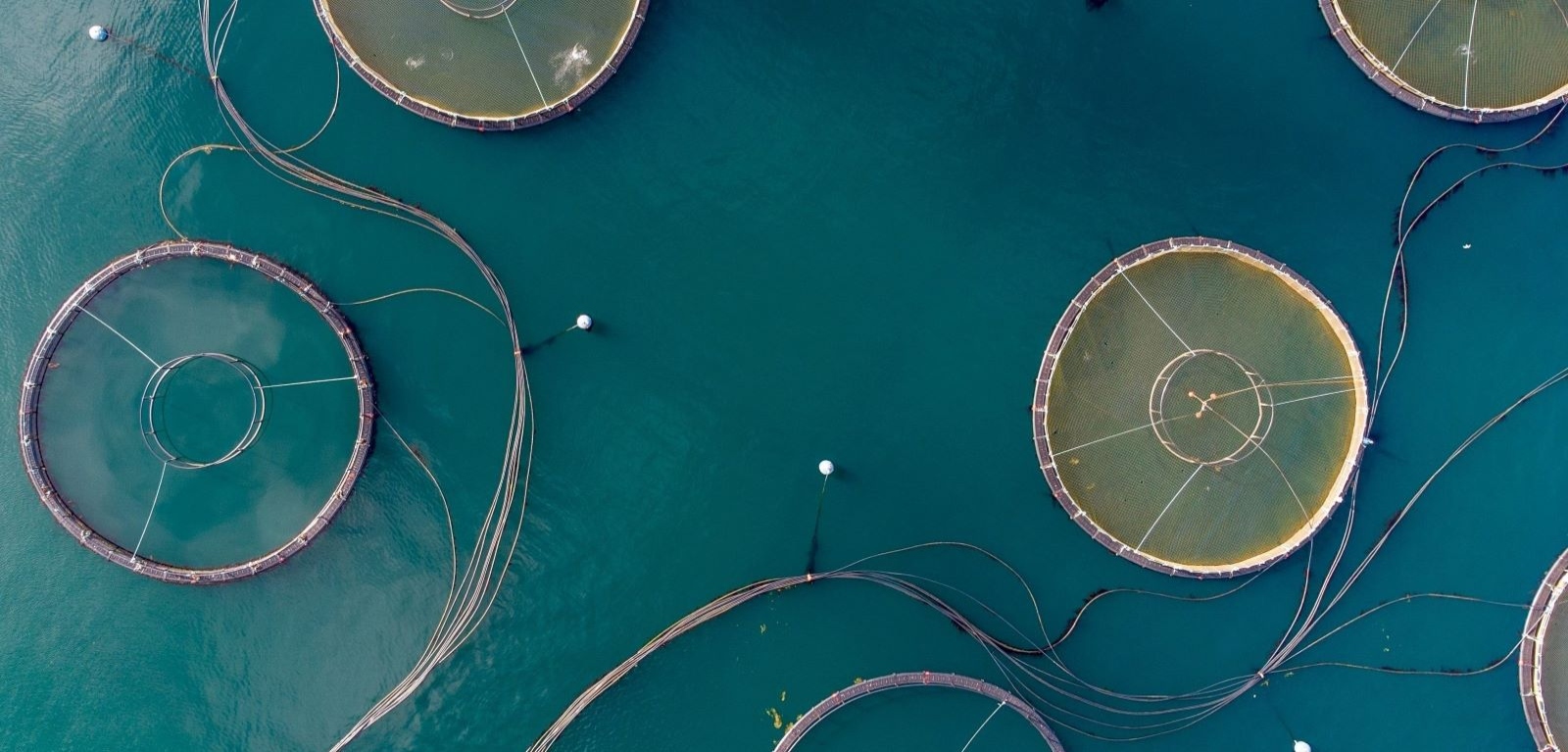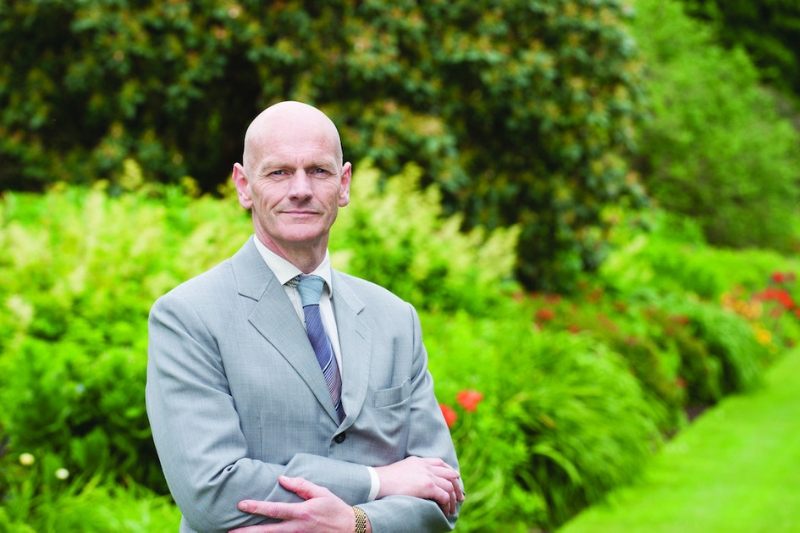New food-testing method from Queen's University scores top marks in study
A potentially game-changing method to ensure the authenticity of food has achieved 100% accuracy in a research project led by IGFS – with potential for application across the global, food-supply chain.

Aerial view of a Scottish fish farm (Credit: Bob Brewer)
The study findings, published in the journal Nature Communications, found that fusing the data from two different scientific testing methods and coupling that with artificial intelligence resulted in much greater accuracy compared with any single method currently available.
The study used salmon as a case study, sourcing over 500 samples, both farmed and wild, from four of the main salmon-producing regions of the world – Alaska, Norway, Iceland and Scotland.
Scientific researchers have struggled to come up with methods of testing fish authenticity that are reliable enough, given the complexity of global supply chains and the many ways fish are processed. Fish is also vulnerable to food fraud. Within the fisheries industry, salmon is a high-value commodity with an often-complex supply chain and is therefore particularly vulnerable to mislabelling and other types of fraud.
The IGFS team measured the lipid fingerprint of the fish and the elemental fingerprint and fused these together into a single ‘data lake’. After this it was a case of high-powered data analytics to ultimately produce a very easy-to-apply diagnostic tool to determine the geographical origins of the fish and the method of production (farmed or wild).
Towards the end of the project, further samples of salmon from UK supermarkets were tested using the new method to compare results – again, there was 100% correlation between information provided by the retailers and what the researchers found in the lab.
The study took three years to complete and researchers believe the results will be very reassuring to the UK consumer.
The authors also say the finding has significant potential for use in other foodstuffs to better ensure authenticity and combat fraud. Food fraud is an increasingly common, highly organised crime estimated to cost tens of billions of pounds globally each year and around £10 billion pa in the UK.
Lead author, PhD student Yunhe Hong said: “We are demonstrating that our mid-level data fusion-multivariate analysis strategy greatly improves the ability to correctly identify the geographical origin and production method of salmon, and this innovative approach has the potential to be applied to many other food-authenticity applications, a very exciting thought. During this project, we also uncovered many other important aspects of food security which we hope to further explore.”
Co-author Professor Chris Elliott OBE added: “The problem with much of the food we eat is that if travels across complex, multinational food chains and the opportunities for fraud are substantial.
“In the fight against global food fraud, science will play an increasingly important role to deter criminals and detect fraud. This study is the latest innovation from our team at IGFS and we are proud to help protect businesses and consumers from potential food-safety and fraud risks.”
Funding for the project was provided through the Agilent Thought Leaders award to Prof Elliott and the research was also supported by the Bualuang ASEAN Chair Professor Fund.
Featured Expert
